

Poverty Overview. There is no silver bullet to ending poverty, and strategies to reach the least well-off must be tailored to each country’s context, taking into account the latest data and analysis and the needs of the people.
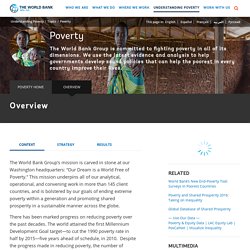
The fact that there has been such progress in the world, however, tells us that a few things are working. Experience shows that in order to sustainably reduce poverty, countries need to: Grow in an inclusive, labor-intensive way. Invest in the human capital of people, especially those who are unable to benefit from basic services due to circumstances beyond their control. Insure poor and vulnerable people against the shocks that can push them deeper into poverty- things such as severe weather, pandemics, food price variability, and economic crises. This goal to end poverty works hand in hand with the World Bank Group’s goal to promote shared prosperity, focused on increasing the income growth among the bottom 40 percent in every country. POVERTY: a growing problem within our world.
Top 5 Causes of Poverty. As governments, aid workers and activists search for solutions to the urgent problem of widespread poverty and seek to combat its many negative effects, there is a need to identify the causes of poverty in order to create sustainable change.
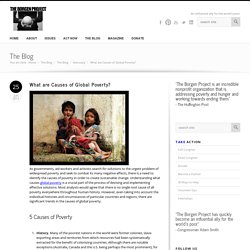
Understanding what causes global poverty is a crucial part of the process of devising and implementing effective solutions. Most analysts would agree that there is no single root cause of all poverty everywhere throughout human history. Finalwhy. Causes of Poverty. Author and Page information by Anup ShahThis Page Last Updated Sunday, September 28, 2014 Almost half the world — over 3 billion people — live on less than $2.50 a day.The GDP (Gross Domestic Product) of the 41 Heavily Indebted Poor Countries (567 million people) is less than the wealth of the world’s 7 richest people combined.Nearly a billion people entered the 21st century unable to read a book or sign their names.Less than one per cent of what the world spent every year on weapons was needed to put every child into school by the year 2000 and yet it didn’t happen.1 billion children live in poverty (1 in 2 children in the world). 640 million live without adequate shelter, 400 million have no access to safe water, 270 million have no access to health services. 10.6 million died in 2003 before they reached the age of 5 (or roughly 29,000 children per day).
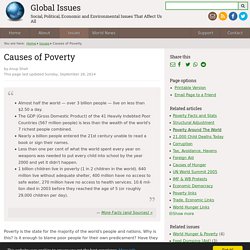
Where does poverty mainly occur. Tropical cyclone (generic term for hurricane,s, typhoons, etc.) form over warm ocean water and are common in all tropical ocean basins except the Atlantic Ocean in the souther…n hemisphere. such strums are called hurricanes in the northern hemisphere in the Atlantic basin and the eastern Pacific.

Pacific hurricanes typically form off the western coast of Central America or southern Mexico. Atlantic hurricane often originate off the coast of Africa, though can develop in the western parts of the basin as well. Tornadoes are more common in temperate environments. The central United States is the area of highest tornado frequency, this region extends a bit into southern Canada. Other hot spots can be found in Bangladesh/India, Australia, South Africa, and Argentina.
Poverty. Global Issues - Social Justice Poverty Aid and Development - Caritas Australia. Home - Anti-Poverty Week. Poverty.com - Hunger and World Poverty. Poverty. Poverty in Australia Report 2014 In October 2015, ACOSS released a new report revealing that poverty is growing in Australia with an estimated 2.5 million people or 13.9% of all people living below the internationally accepted poverty line.
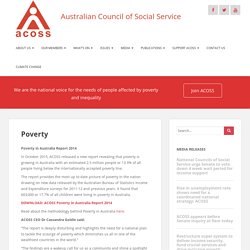
The report provides the most up to date picture of poverty in the nation drawing on new data released by the Australian Bureau of Statistics Income and Expenditure surveys for 2011-12 and previous years. It found that 603,000 or 17.7% of all children were living in poverty in Australia. Episode 4: Poverty: Where We All Started. How is poverty defined, for the purposes of this video?
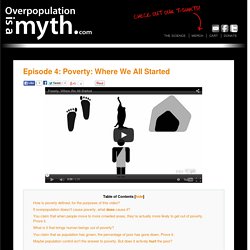
For the purposes of this video, we use the World Bank's definition of poverty. The World Bank defines poverty as: … pronounced deprivation in well-being, and comprises many dimensions. It includes low incomes and the inability to acquire the basic goods and services necessary for survival with dignity. Poverty also encompasses low levels of health and education, poor access to clean water and sanitation, inadequate physical security, lack of voice, and insufficient capacity and opportunity to better one's life. You can find this definition of poverty online here. In other words, human beings require more than simple survival to make our lives worth living. If overpopulation doesn't cause poverty, what does cause it? The thing to remember about poverty is that it isn't a disease or a “condition,” like the measles or a broken leg. You claim that when people move to more crowded areas, they're actually more likely to get out of poverty.